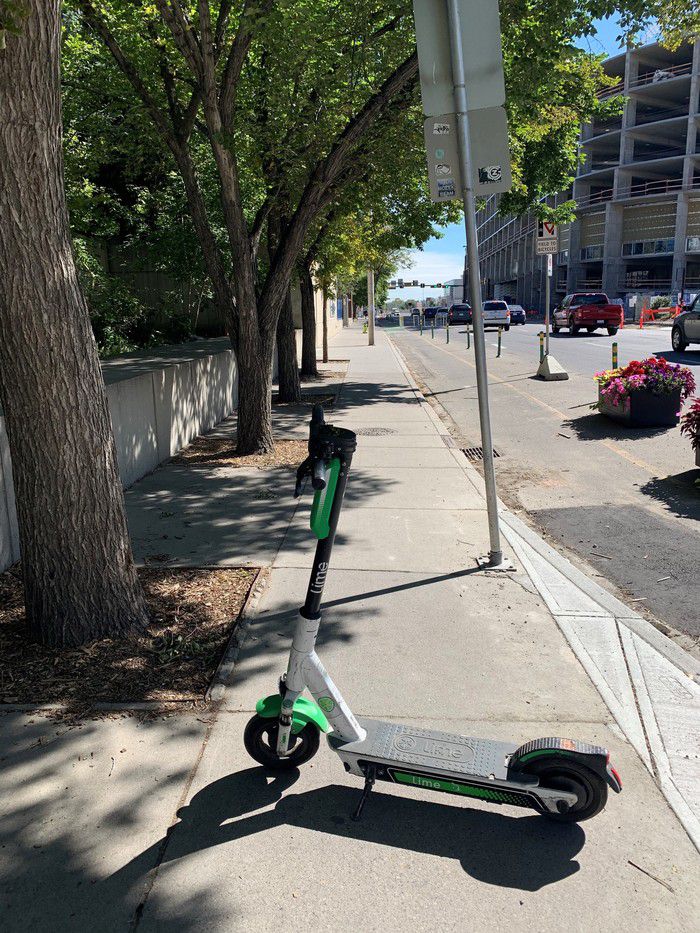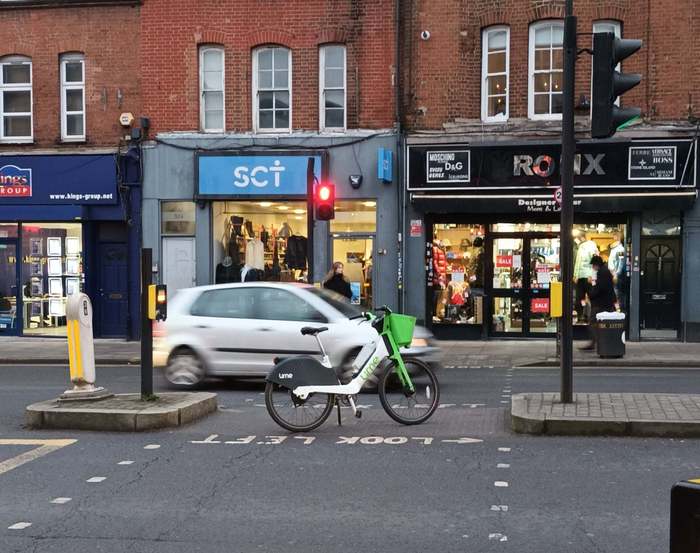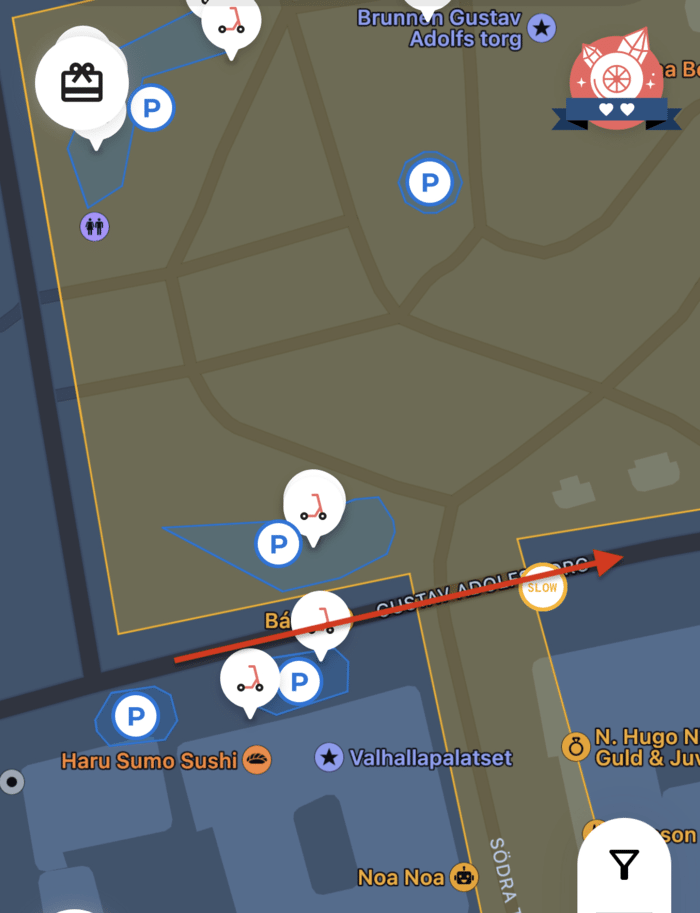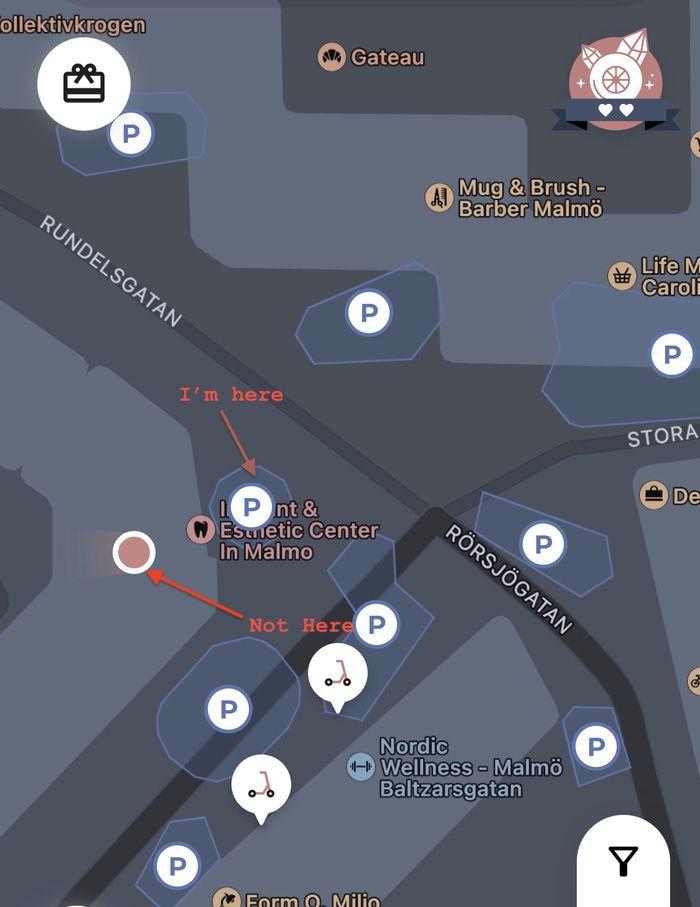Enforcement can have the inverse effect
Table of Contents
I live in a small city which is extraordinarily easy to cycle through.
Everything is a short distance, the cycle infrastructure is kept tidy and there is a distinct absence of anything that could even remotely be considered a hill.
One issue that keeps cycling down (if there are any) is that unscrupulous ball-bags1 tend to steal bicycles rather often, there are even remarks that “bikes are socially owned, you never own one personally”. Which, if you enjoy having a bike with good gearing and a high degree of comfort (especially one that cost a lot) is unsettling to hear.
The advent of e-Scooters all but eliminated these worries, they are a communal asset, they are sufficiently fast, low effort (so you’re not sweaty when you arrive) and ubiquitious enough that you can be fairly certain you will find one. These nippy little things are also fantastic on the cycling infrastructure, going just marginally faster than the average cyclist; allowing you to overtake excessively slow cyclists easily, but keep (or match pace) with ordinary ones.
Unfortunately, people are ball-bags.
Even the bikes aren’t safe.
People park these things wherever they feel like without regard to foot, bike or car traffic, ride as fast as possible through pedestrian areas and often ride with two or even three people on a scooter at a time!
Truly, something must be done.
Fix 1: Speed limit pedestrian areas and tight areas #
I imagine the discussion happening at HQ:
Our scooters have in-built GPS and we can control the speed of the motor, they’re also connected via LTE.
This is perfect.
We will draw a geofence and limit the vehicle speed in those areas!
Genius!
Sounds good? Right?
The problem is for purely software approaches like this that rely on hardware is: GPS is not actually perfectly precise, cars tend to fake it by assuming you’ll be on the road (which you can usually tell is happening when you start pulling off of a road that the map knows about to a road that the map doesn’t know about).
Additionally, GPS on low energy devices also tends to… poll. Leaving the GPS streaming is computationally expensive and antennas area major power suck. So, if you’re running an eScooter company, you would probably set that polling rate to be as low as you can get away with, maybe once every 90 seconds.
You can see this battery drain in real life by leaving (Google|Apple) Maps open on your iPhone.
What this means is, you can enter a designated slow zone, but the scooter does not immediately know it’s in a slow zone. Thus you can go full speed through slow zones! At least for a little while.
This works the inverse too, if you’re in a slow zone and leave: well, be prepared to wait for the scooter to realise you left!
Commonly the issue becomes, though, that small areas of the map that are designated slow zones but that you pass by can add a minute or two on your 5 minute journey. If you spend enough time in the slow zone for it to notice that you’re in a slow zone.
Thus, the incentive is to absolutely gun it through those little sections, in the hope the GPS doesn’t catch you.
Doing the right thing here and slowing down is going to make your journey longer, which makes you pay more.
You’re basically punishing the correct behaviour.
Worse: it can be more dangerous either way as the slowdown is completely unpredictable and the GPS can put you in a slow area even if you’re not actually riding in one.
Fix 2: Parking in designated areas #
I can almost hear another conversation at HQ:
People keep parking like dumbasses across pavements,
but we have a wonderfully precise GPS system that we’re already using and we have a collection of painted areas on a city map that can fence parking!
What we can do, is prevent ending the ride and locking the scooter in any un-designated parking area!
So, Another GPS solution, but one that isn’t affected by a low polling rate, but given how imprecise GPS can be, I don’t think I’d ever be convinced that this was going to work.
Hrm, yeah, this is me standing in a blue square area.
If I was trying to park a scooter the ride sharing app would complain about this. I would need to move my expected coordinates (orange dot) to the middle of the blue painted area by walking east to end my ride, if I walk east though I will be leaving the scooter awkwardly placed across a pedestrian footpath. (those light grey areas are pedestrian walk ways)
This is, again, incentivising the wrong behaviour.
Other example: Piracy #
Movie piracy is the most blatant example of what I’m talking about.
Those buying DVDs to watch movies legitimately in the 00’s had to sit through minutes of unskippable ads and egregious anti-piracy warnings.
Those that actually pirated had a better experience in their movie watching.
Almost assuredly leading to (a non-zero) number of people into the loving embrace of torrent sites.
Conclusion, if there is one. #
I consider myself a conscientious rider, I park away from pedestrian traffic, usually next to a bicycle stand – I ride with care around areas where people cross – I ride alone, and never on the pavement.
However, even I have been tempted to say “fuck it” and speed through “slow” areas. When I am late for something and the parking does not allow me to lock my scooter, I am tempted to just walk to where my GPS allows parking and abandoning the scooter wherever that might be.
Note: I used VOI for these examples, and to their credit, they are allowing you to lock your scooters outside of those areas and they have improved the polling rate of the scooters a lot, though it does remain a problem.
The main point I’m driving here is that sometimes enforcement encourages ordinary users into doing the wrong thing, or needlessly punishes them.
I don’t have any solutions for the problems I presented, perhaps clear license plates and harsh penalties if reported for dangerous driving (along with looking at the telemetry of the ride) and actually validating the parking is free from obstructing the path which could be done with the picture you send at the end of ride.
However, I’m mostly interested in the realisation I had while riding that if I didn’t care about slowing down or where I lock my scooter; I would have been better off in terms of time and money.
-
Derogatory British slang word for a thoughtless and ignorant individual. ↩︎





